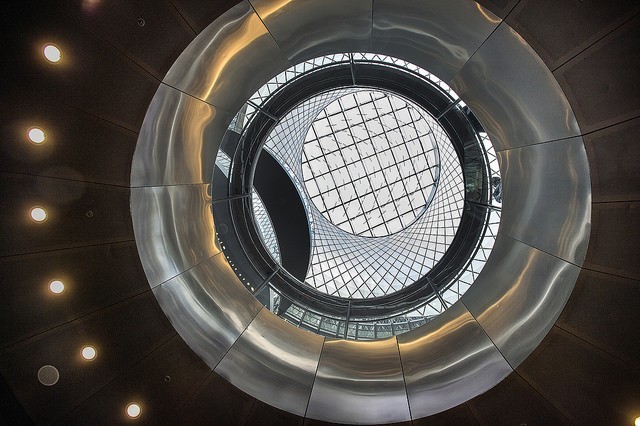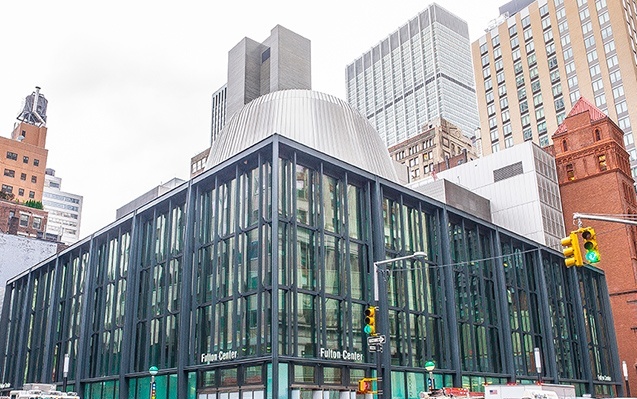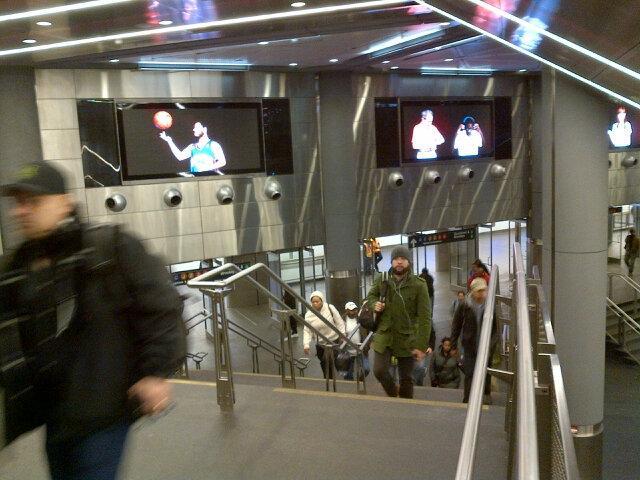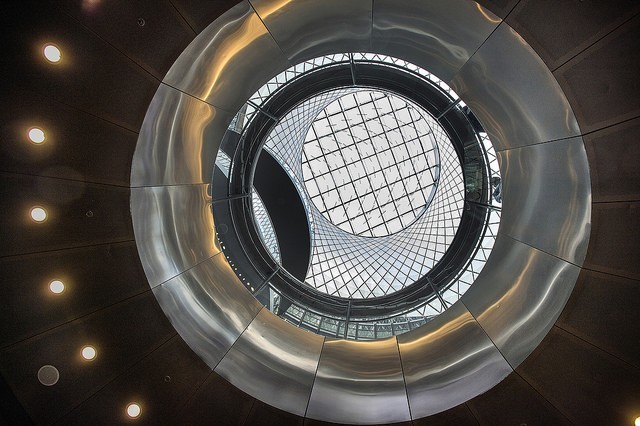
Projects: New NYC Landmark Fulton Center Opens Doors With 52-Screen Network
November 10, 2014 by Dave Haynes

There’s a new gotta-go-see digital signage landmark in New York – this one a massive new transit hub in lower Manhattan called the Fulton Center.
The center opened today and will eventually house by next spring five levels of retail run by Westfield Properties, which manages the overall property for the MTA. The centerpiece of the $1.4 billion building is a 110-foot-tall oculus that reflects and brings sunlight deep into the station.
The station brings together under one roof, and a lot of tunnels, nine different MTA subway lines. The public areas have a total of 52 different screens, ranging from 55-inch LCDs that line the Dey Street concourse to 32′ by 19′ LED walls on the street level. Right now programming is from the MTA’s own arts initiative. MTA Arts & Design’s New York Minute features the work of new media artist Gabriel Barcia-Colombo.

Barcia-Colombo’s installation features portraits of New Yorkers doing everyday activities in super slow motion and shows what else happens amid the frenetic pace of life in New York. It highlights the comical and sometimes poignant street interactions that help make New York unique. Its title refers to the hectic pace of New Yorkers’ lives.
Through an arrangement with Westfield Properties, which manages Fulton Center on behalf of the MTA, all 52 videos air simultaneously for 30 seconds every 10 minutes, six times each hour. Viewers can watch a different sequence each time they walk past the installation space.
“Our customers will recognize themselves in these videos because they do the same kind of things — dancing, laughing, playing, and embracing our children. This work creates a moment of bonding and sense of community that ties us to other people in the city,” says Amy Hausmann, deputy director of MTA Arts & Design. “Gabe’s work reminds us that we’re not alone and that at any given moment in New York, there’s always something else going on too.”
“Fulton Center represents the future of the MTA, so we looked to technology that also would move Arts & Design into the future. A digital arts program gives us the opportunity to offer temporary art, to work with new digital artists and to produce art that engages our customers in a more immediate way,” adds Sandra Bloodworth, director of MTA Arts & Design. “Large-scale electronic displays like the one in Fulton Center open up a world of possibility for new media artists to connect with our customers, whether it’s through a piece that makes them pause and smile or inspires a thought that stays with them on their journey.”




relatively new to the industry and focused on Hospitality and Healthcare for Convergent Media Systems. Looking forward to be informed by you